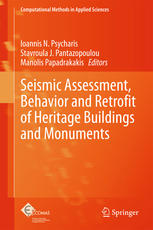

Most ebook files are in PDF format, so you can easily read them using various software such as Foxit Reader or directly on the Google Chrome browser.
Some ebook files are released by publishers in other formats such as .awz, .mobi, .epub, .fb2, etc. You may need to install specific software to read these formats on mobile/PC, such as Calibre.
Please read the tutorial at this link: https://ebookbell.com/faq
We offer FREE conversion to the popular formats you request; however, this may take some time. Therefore, right after payment, please email us, and we will try to provide the service as quickly as possible.
For some exceptional file formats or broken links (if any), please refrain from opening any disputes. Instead, email us first, and we will try to assist within a maximum of 6 hours.
EbookBell Team

5.0
30 reviewsThis book assembles, identifies and highlights the most recent developments in Rehabilitation and retrofitting of historical and heritage structures. This is an issue of paramount importance in countries with great built cultural heritage that also suffer from high seismicity, such as the countries of the eastern Mediterranean basin. Heritage structures range from traditional residential constructions to monumental structures, ancient temples, towers, castles, etc. It is generally recognized that these structures present particular difficulties in seismic response calculation through computer simulation due to the complexity of the structural system which is, generally, inhomogeneous, with several contact problems, gaps/joints, nonlinearities and brittleness in material constituents. This book contains selected papers from the ECCOMAS Thematic Conferences on Computational Methods in Structural Dynamics & Earthquake Engineering (COMPDYN) that were held in Corfu, Greece in 2011 and Kos, Greece in 2013. The Conferences brought together the scientific communities of Computational Mechanics, Structural Dynamics and Earthquake Engineering in an effort to facilitate the exchange of ideas in topics of mutual interest and to serve as a platform for establishing links between research groups with complementary activities.